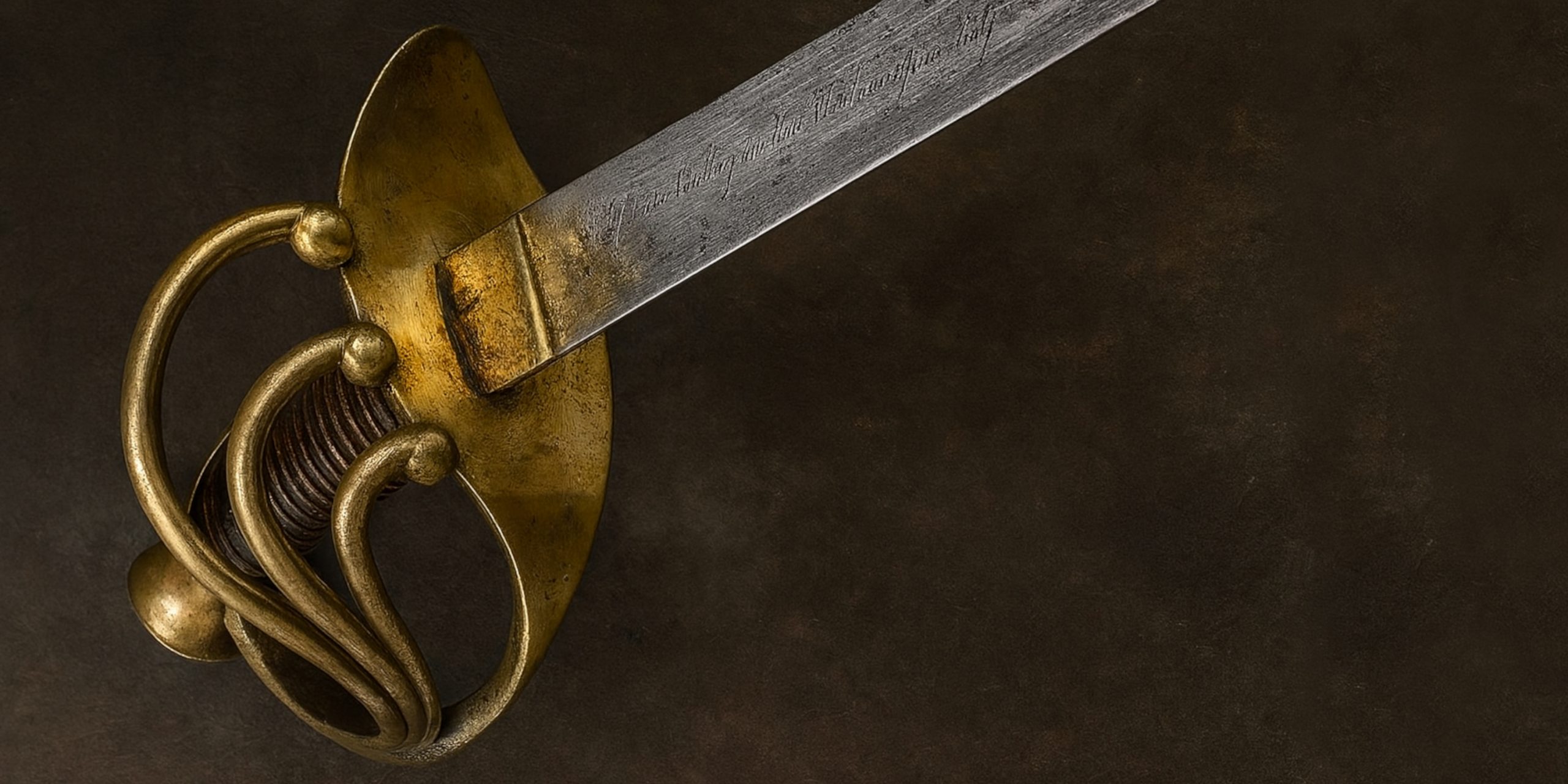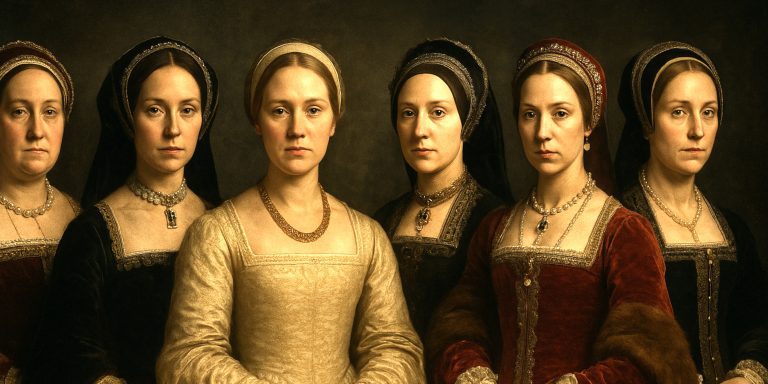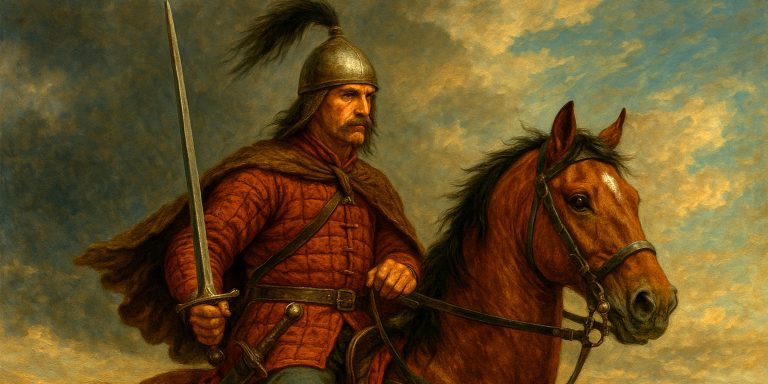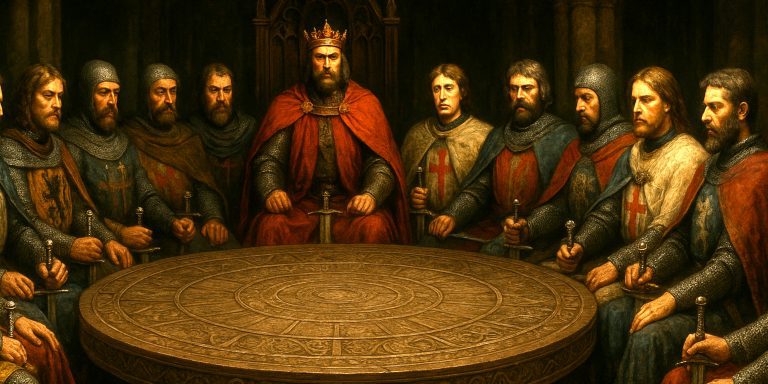
The Spanish Cavalry Sword Model 1840 was a standard-issue sabre adopted by Spain for mounted troops in the mid-19th century. It was designed during a period of significant military reform, when cavalry tactics still relied heavily on shock charges and close combat. Its curved blade and robust build reflected the influence of earlier Napoleonic-era designs while incorporating features suited to Spain’s own military needs.
Specification
| Feature | Detail |
|---|---|
| Type | Cavalry sabre |
| Origin | Spain |
| Service Period | c. 1840 to late 19th century |
| Blade Length | Approximately 90–95 cm |
| Blade Type | Curved, single-edged with a broad fuller |
| Hilt | Brass three-bar guard with backstrap and ribbed grip, often leather-covered |
| Scabbard | Steel, with twin suspension rings |
| Weight | Around 1.1–1.3 kg |
| Intended Use | Slashing from horseback, with limited thrust capability |
History and Evolution
The Model 1840 was introduced during a time when Spain sought to standardise its cavalry equipment. Its design drew inspiration from earlier French and British sabres, particularly the French AN XI and British 1796 Light Cavalry sabres, but with a slightly heavier build to suit the Spanish cavalry’s preference for a more forceful cut.
Production was primarily handled by the Toledo sword-making industry, famous for its centuries-old tradition of high-quality blades. Over time, minor variations appeared, particularly in hilt finish and scabbard fittings, often reflecting different contractors or later refurbishment.
By the late 19th century, the sabre was gradually replaced by thrust-oriented straight swords as firearms reduced the battlefield role of massed cavalry charges. Many examples, however, remained in service with colonial units and militias well into the early 20th century.
Advantages and Disadvantages
Advantages
- Strong, well-balanced blade with effective cutting power.
- Durable brass hilt resistant to field wear and corrosion.
- Toledo steel offered excellent edge retention and resilience.
Disadvantages
- Curved blade less effective for thrusting compared to straight cavalry swords.
- Heavier than some European equivalents, which could fatigue the user over prolonged action.
- Less suited to late-19th-century combat realities where cavalry increasingly fought dismounted.
Comparison with Similar Weapons
| Weapon | Country | Key Differences |
|---|---|---|
| French Sabre AN XI | France | Lighter, slightly shorter blade, more refined balance for quicker cuts. |
| British 1796 Light Cavalry Sabre | Britain | More pronounced curve and hatchet point, optimised for slashing. |
| Prussian M1811 Blücher Sabre | Prussia | Heavier and straighter than the Spanish model, better for thrusting. |
| US Model 1840 Cavalry Sabre | United States | Very similar in design, likely influenced by European imports, with a more pronounced forward weight. |
Legacy
The Spanish Cavalry Sword Model 1840 remains a respected example of mid-19th-century European sabre design. It represents the final generation of cavalry swords meant primarily for cutting before military doctrine shifted toward thrusting blades and eventually abandoned edged weapons for combat use altogether. Today, it is appreciated by collectors for its craftsmanship, historical connections to Spain’s colonial campaigns, and the enduring reputation of Toledo steel.
Where to See
- Museo del Ejército, Toledo, Spain – Displays several examples alongside other 19th-century Spanish military arms.
- Museo Naval, Madrid, Spain – Includes sabres from Spanish cavalry regiments and colonial forces.
- Private collections and military history museums across Europe – Often in displays on 19th-century cavalry warfare.
Collectors Guide and Auction Prices
Collector Notes
- Original condition with intact blade markings from Toledo or other armourers greatly increases value.
- Matching scabbards are desirable and less common than loose blades.
- Signs of over-polishing can reduce historical value.
Typical Market Values
| Condition | Description | Price Range (GBP) |
|---|---|---|
| Excellent | Complete, original finish, clear markings, minimal wear | £600–£900 |
| Good | Some wear, light pitting, serviceable condition, scabbard included | £400–£600 |
| Fair | Significant wear, corrosion, missing scabbard or grip damage | £200–£400 |
High-end examples with regimental provenance or officer-grade fittings can exceed £1,200 at specialist auctions.



